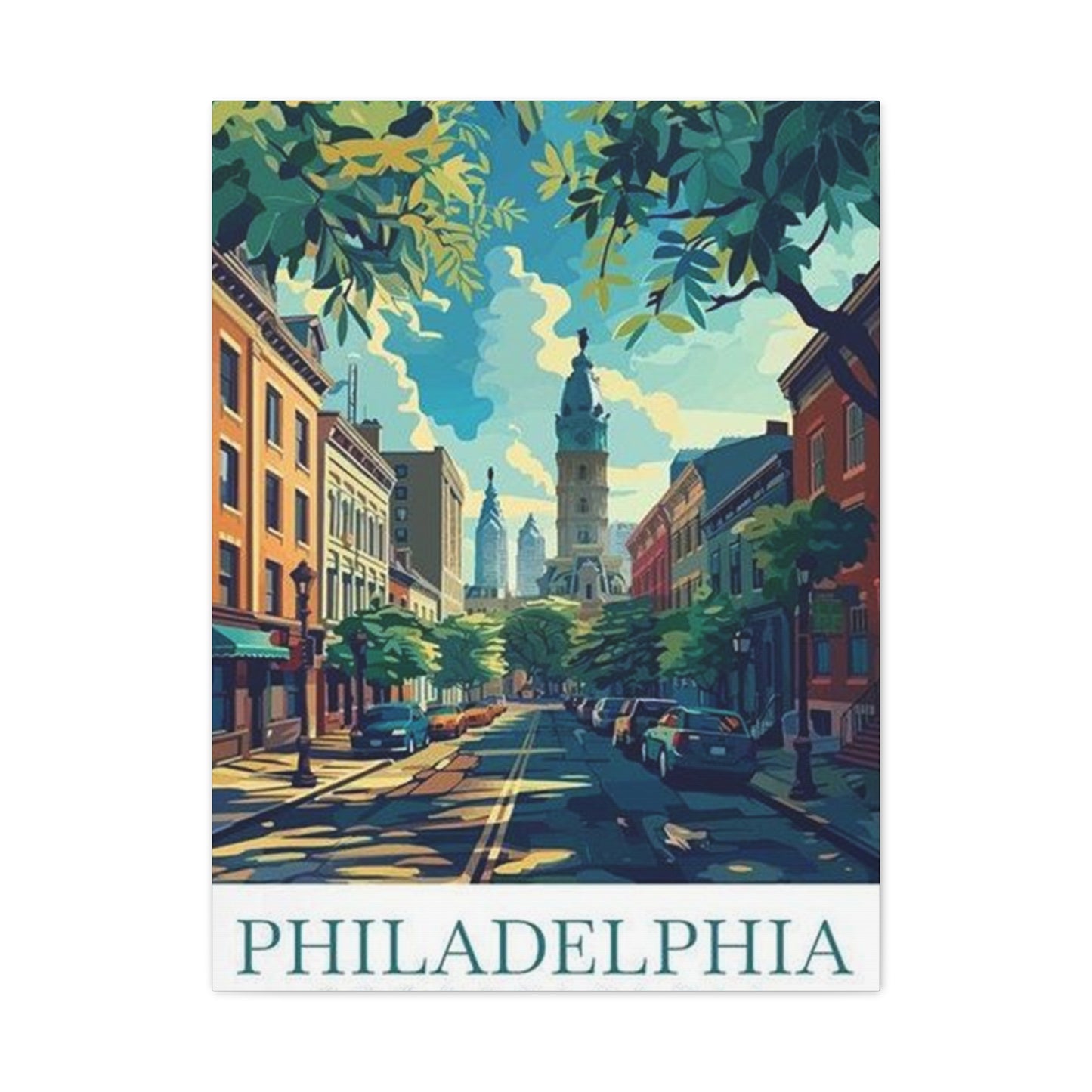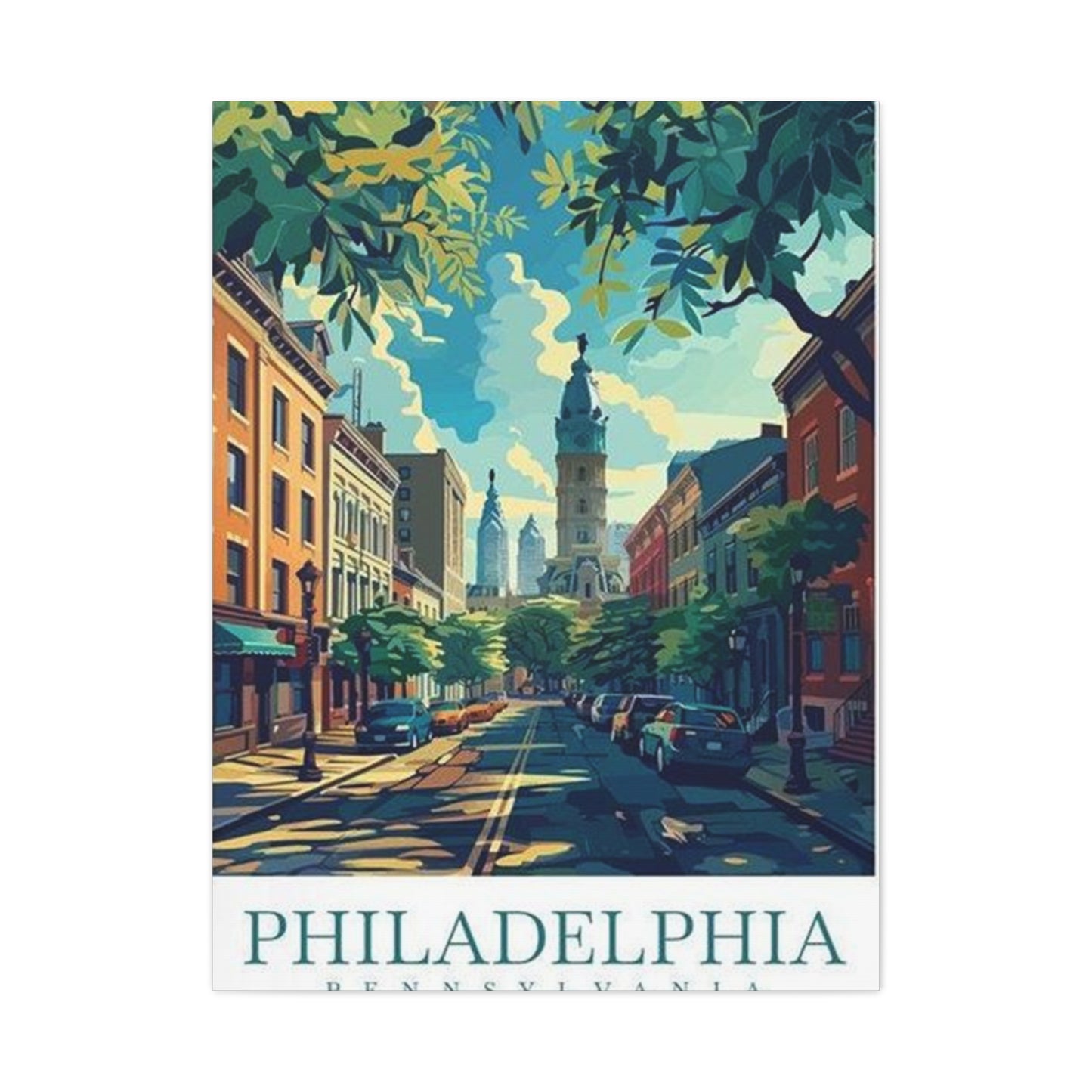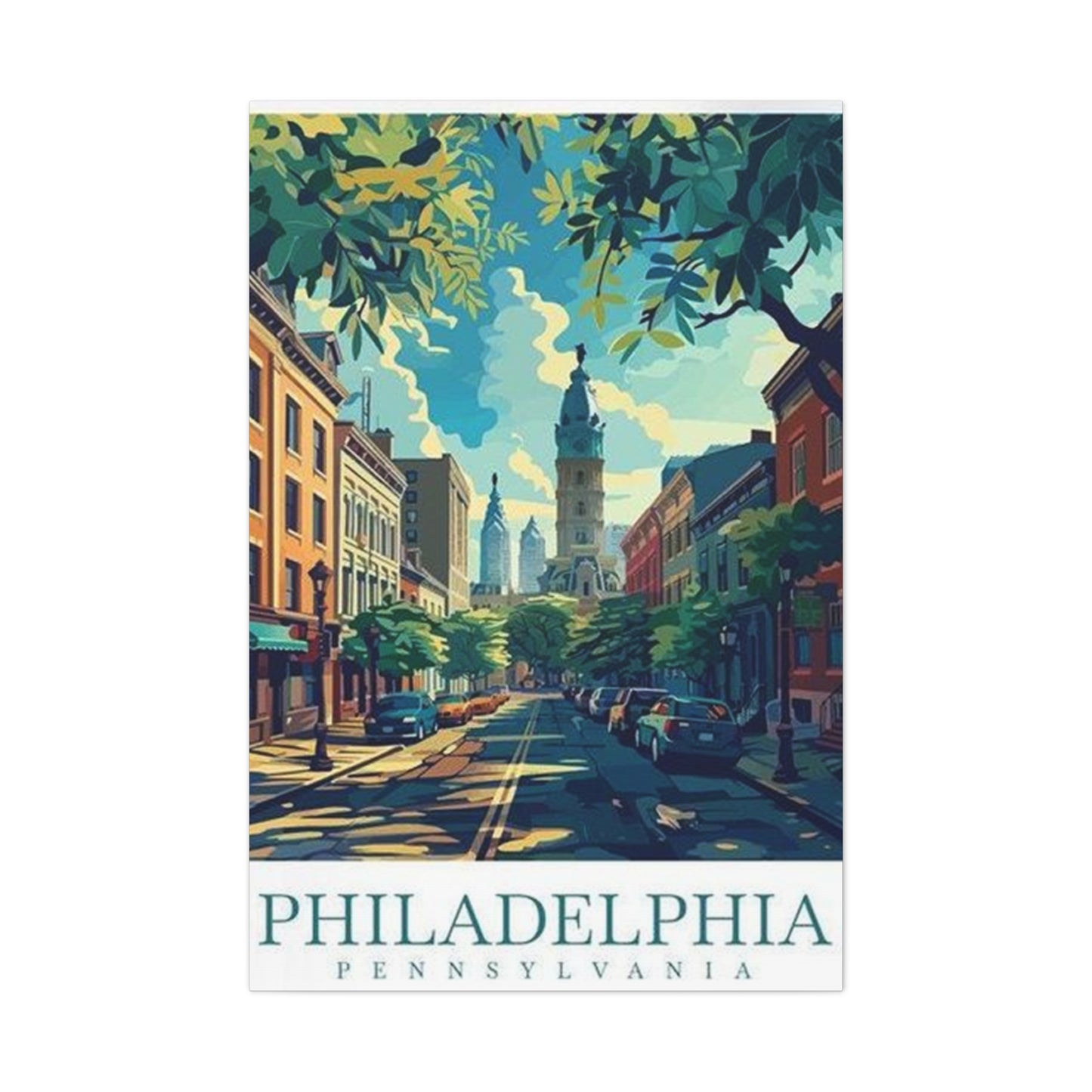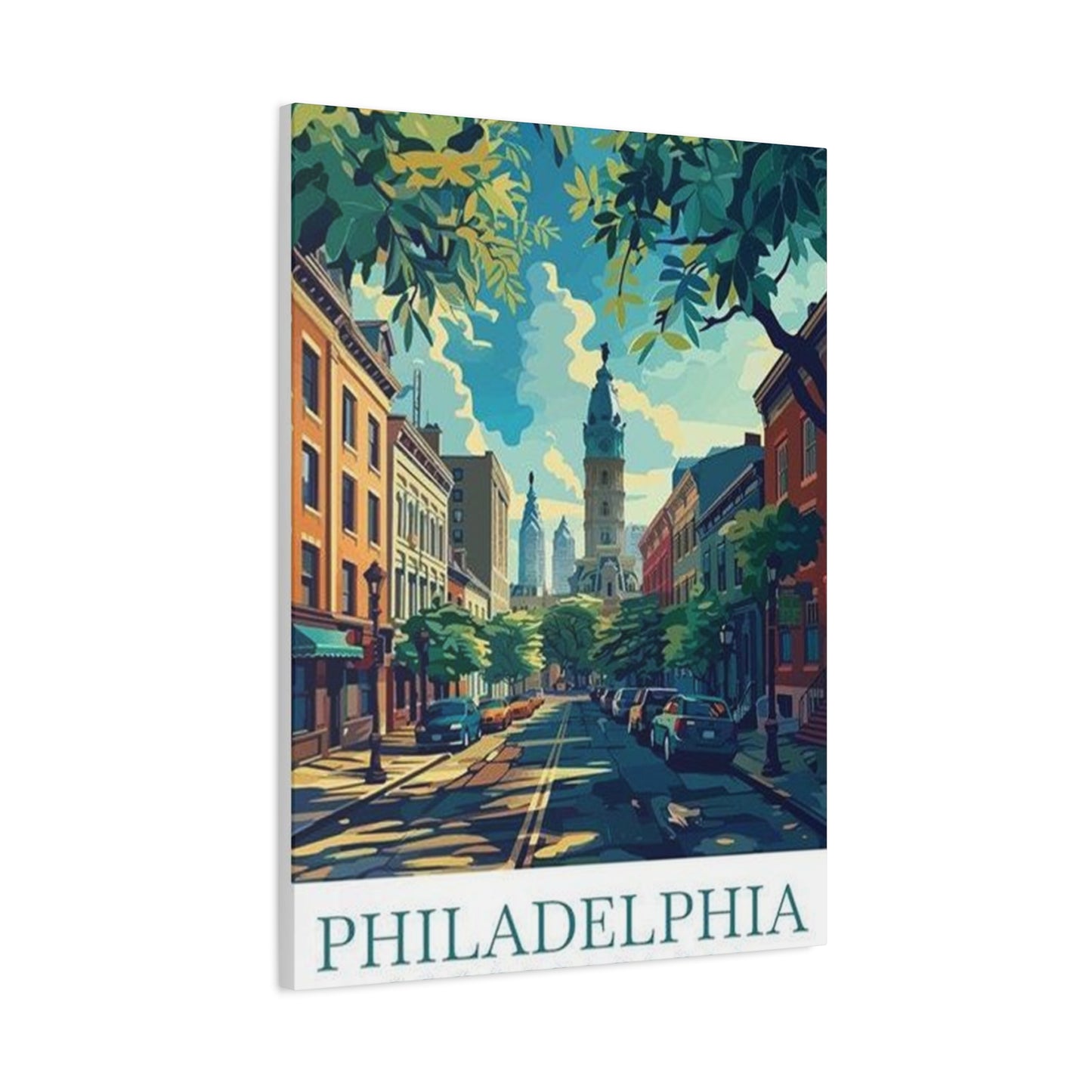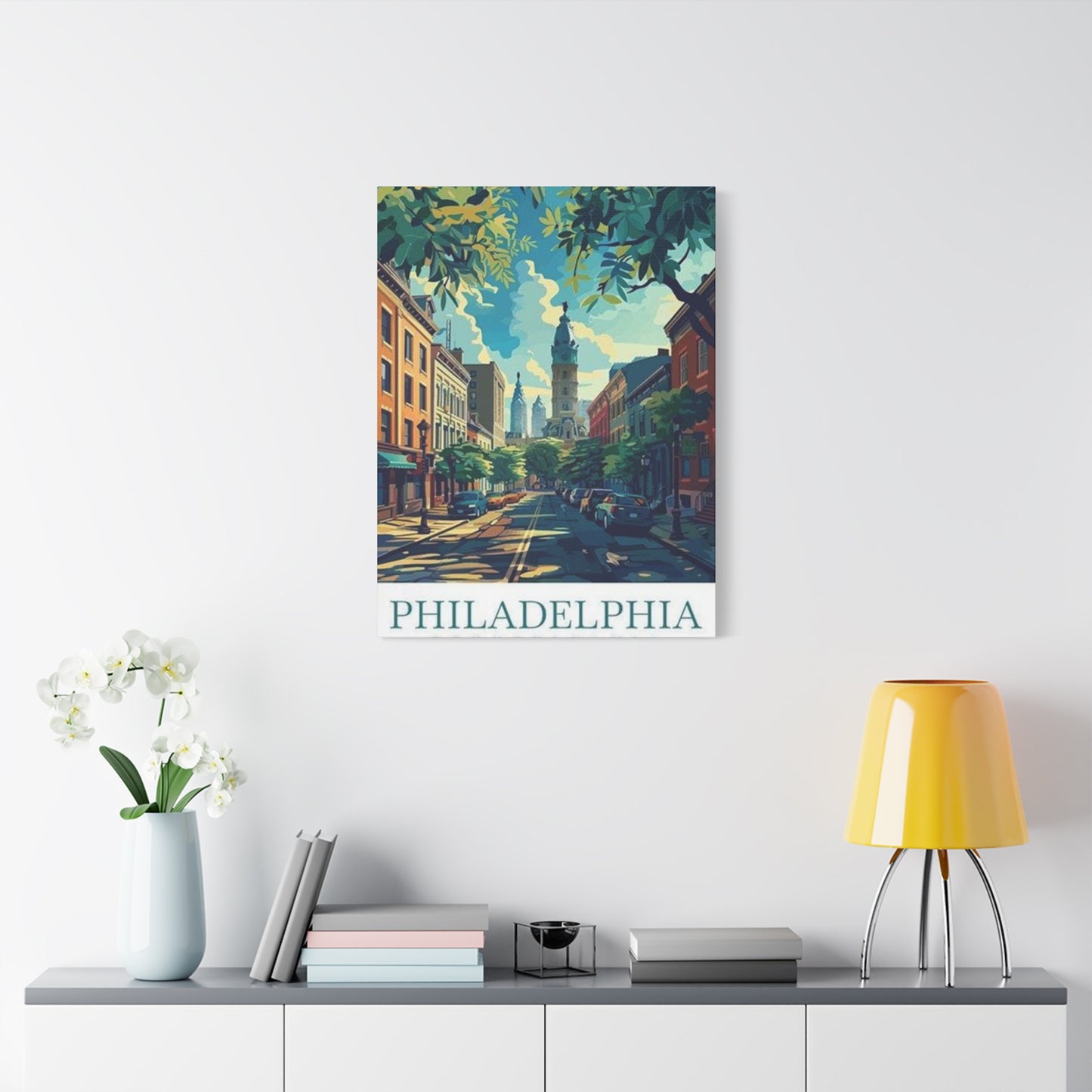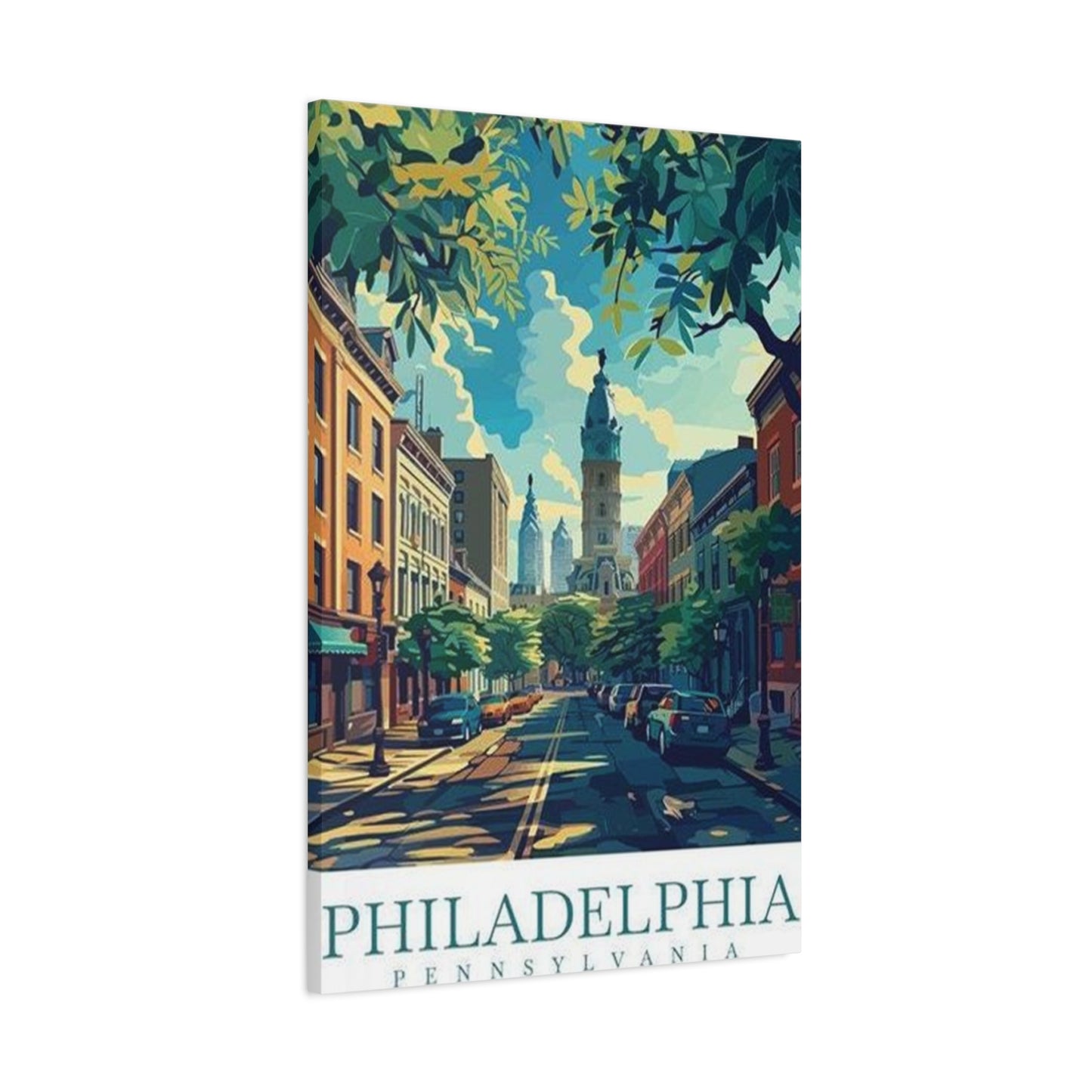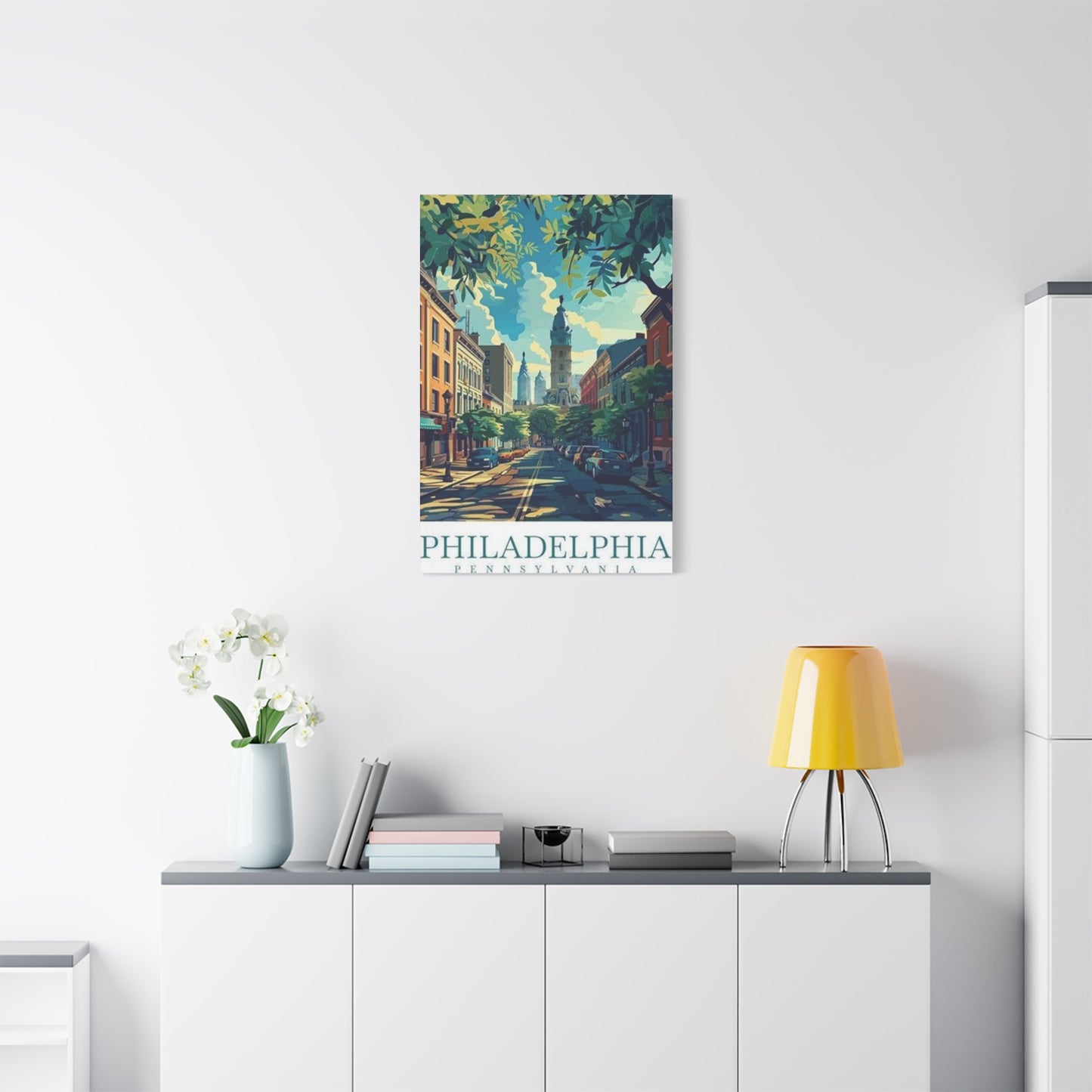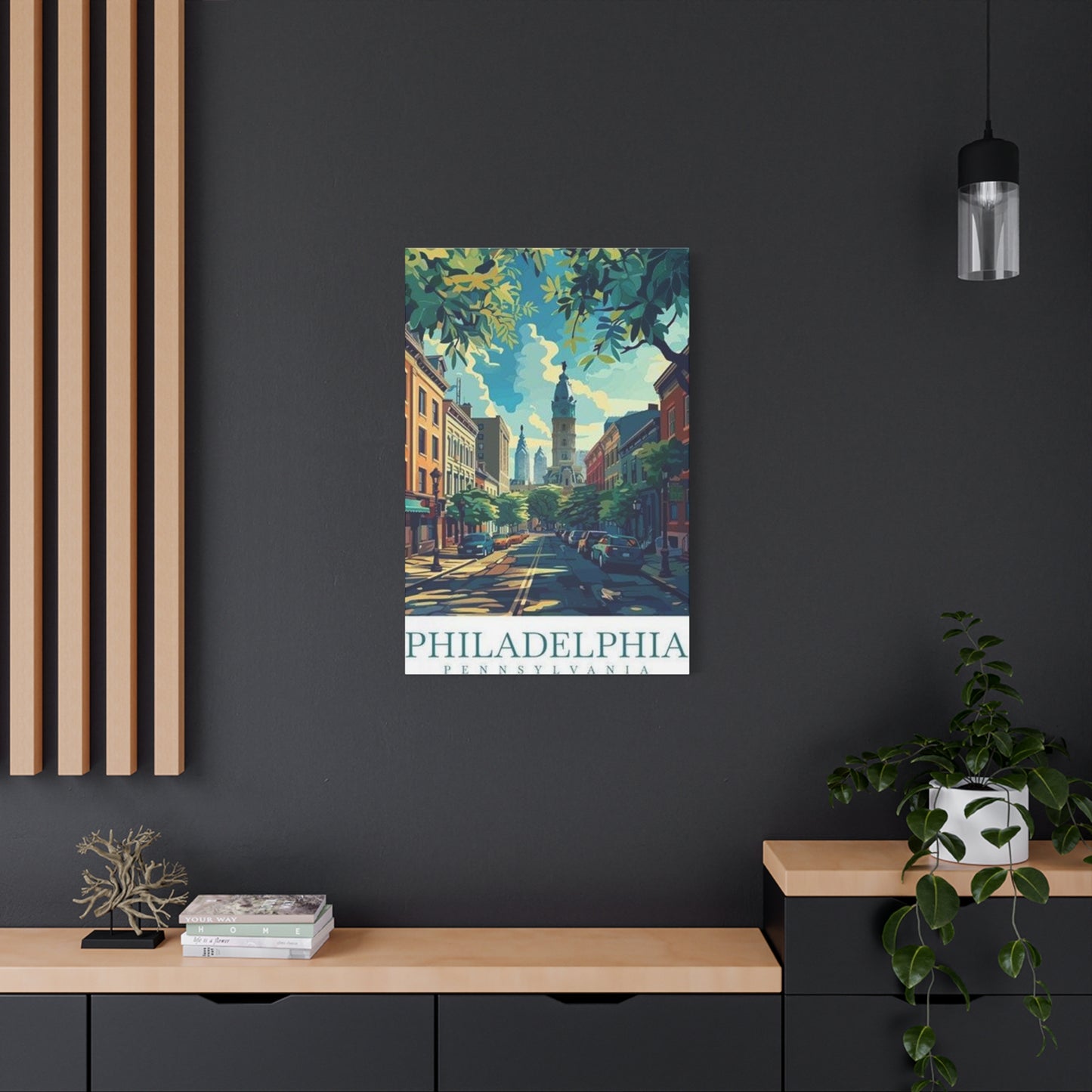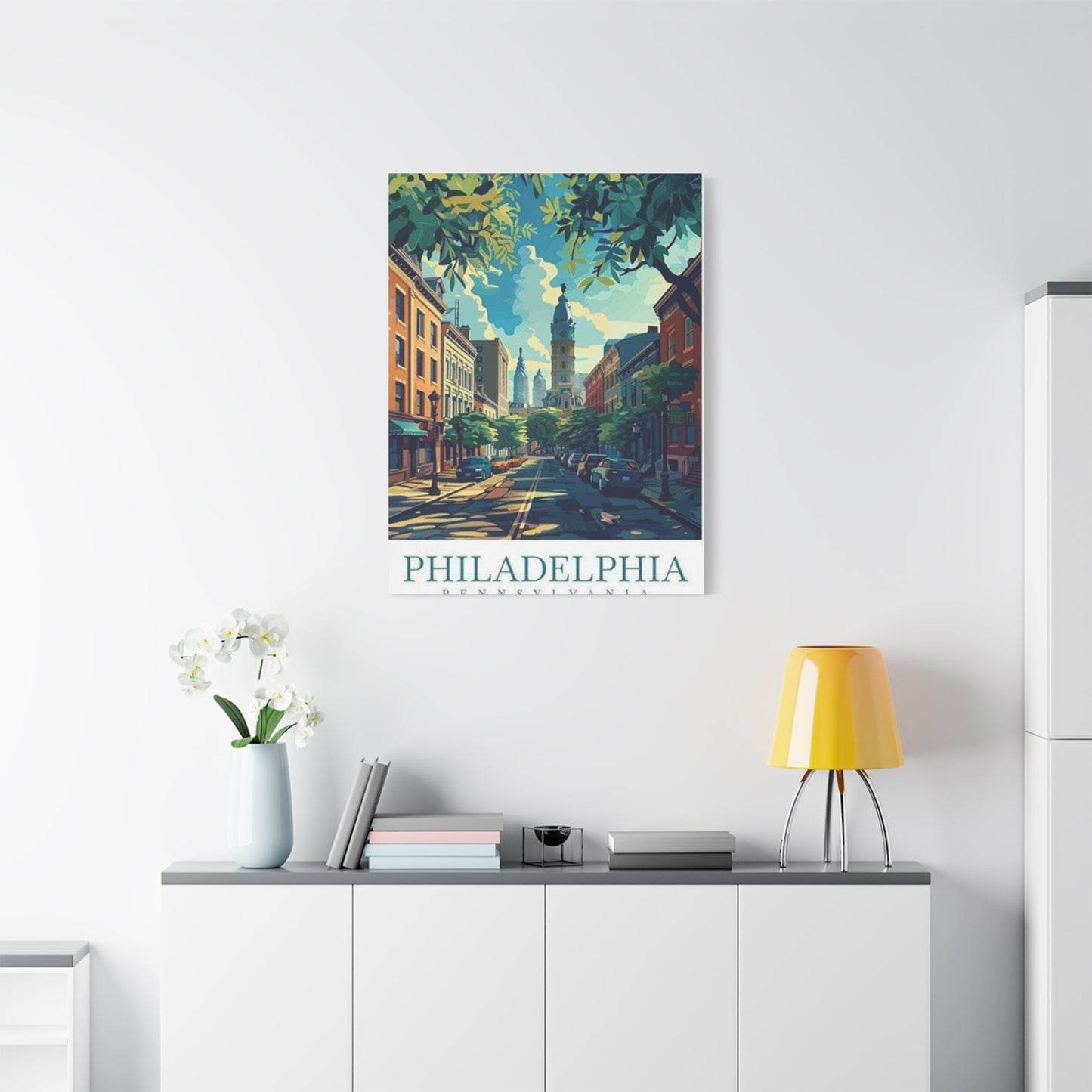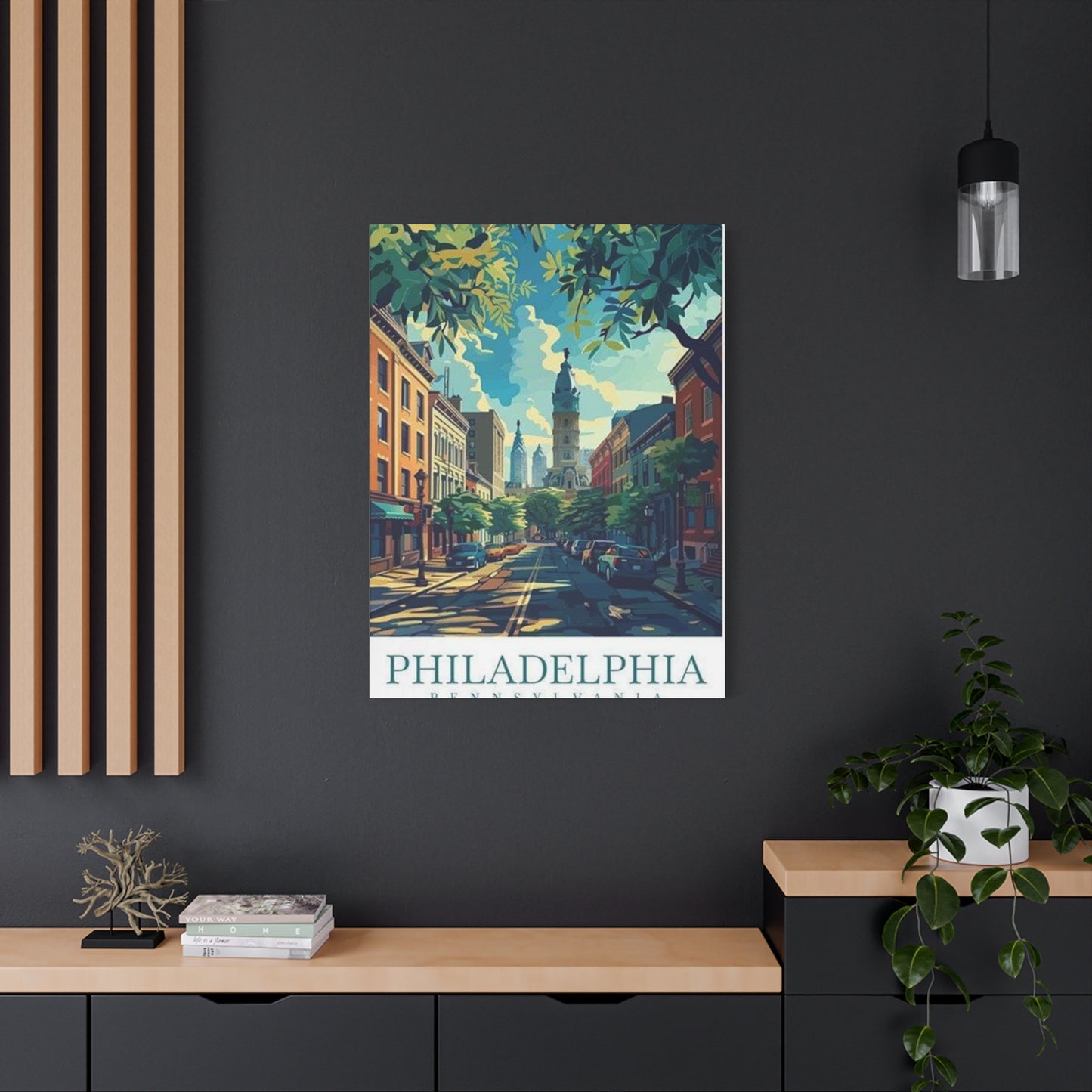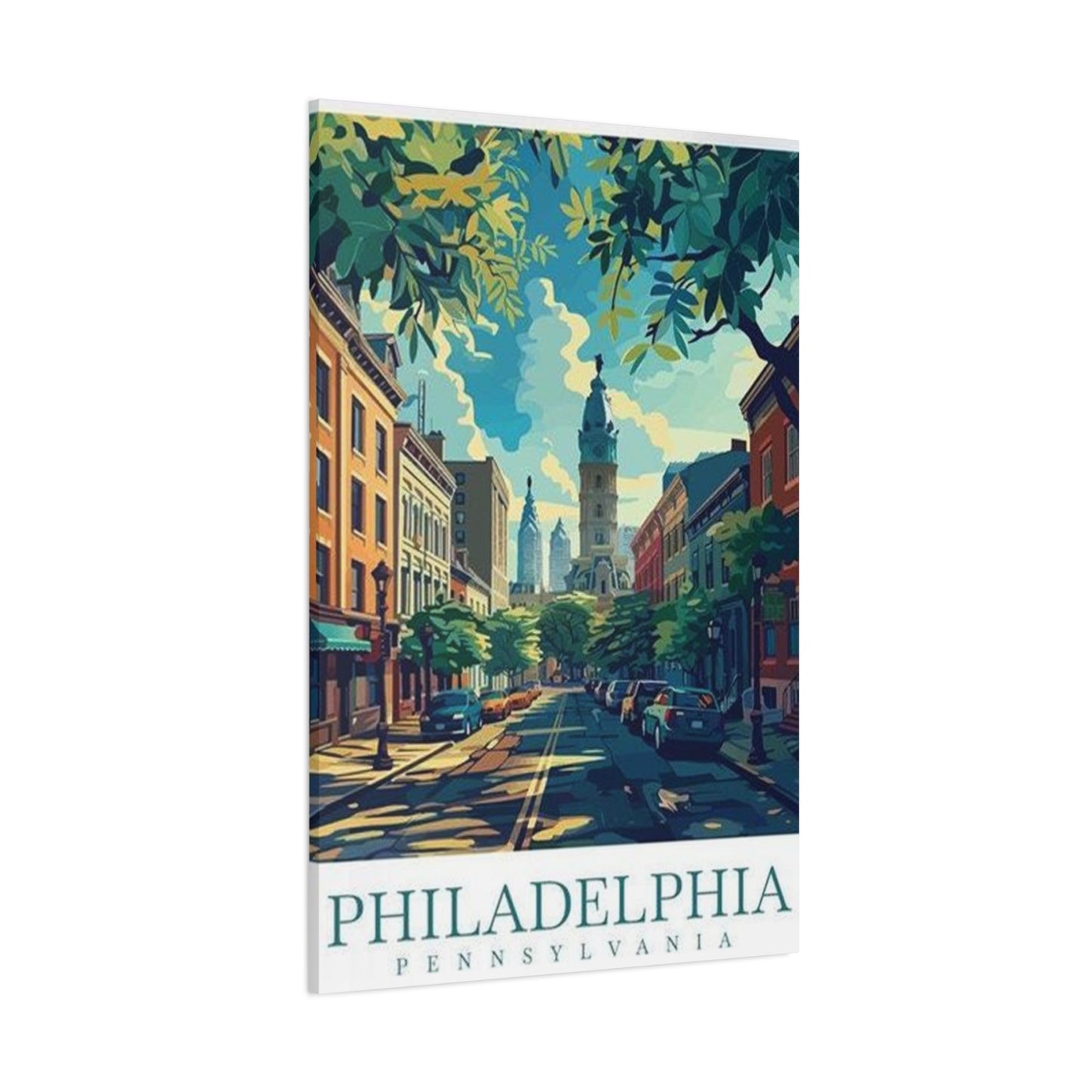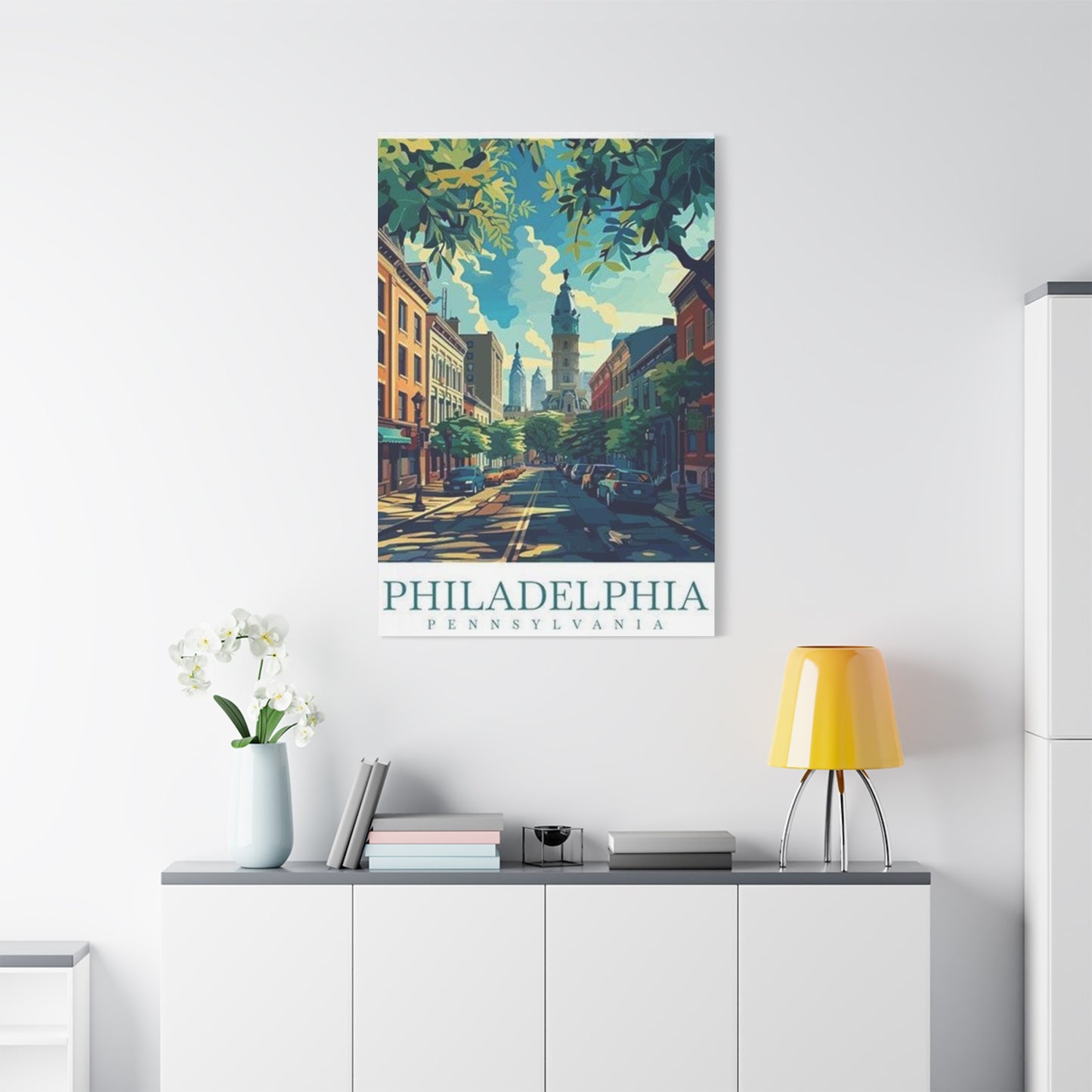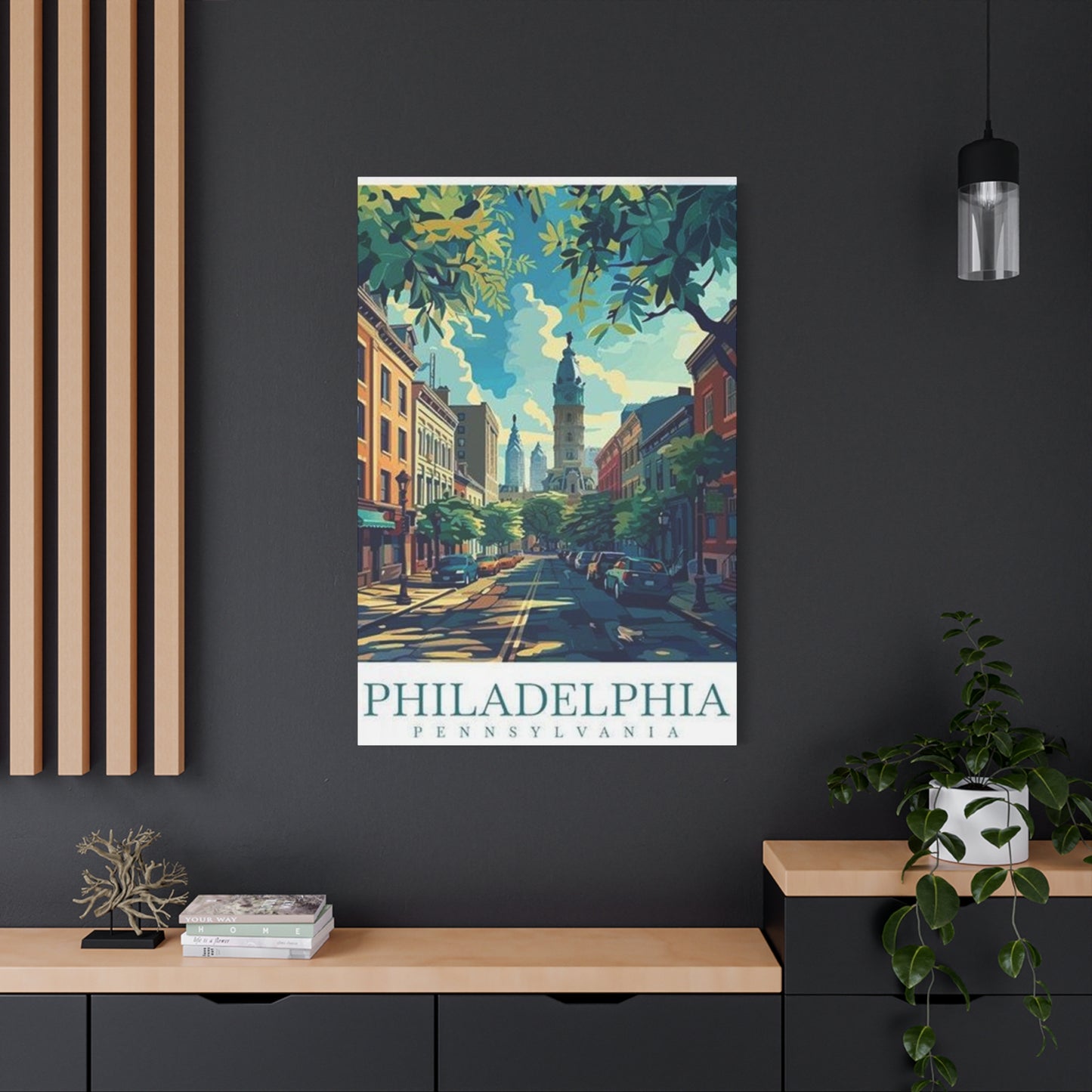Philadelphia Streets Wall Art Canvas Prints: Transform Your Space with Urban Beauty
Philadelphia stands as one of America's most culturally rich cities, offering an incredible blend of historical significance and contemporary artistic expression. The streets of this remarkable metropolis serve as an open-air gallery, showcasing breathtaking murals, graffiti masterpieces, and urban artwork that captures the essence of American creativity. For art enthusiasts and interior design lovers, bringing these stunning visuals into personal spaces through high-quality reproductions has become increasingly popular. The transformation of public street scenes into elegant home decor pieces allows individuals to celebrate urban culture while adding sophisticated touches to their living environments.
The concept of displaying urban landscapes within residential and commercial spaces represents more than mere decoration. These pieces serve as conversation starters, cultural artifacts, and windows into the soul of one of America's most dynamic cities. When walking through Philadelphia's neighborhoods, observers encounter an extraordinary tapestry of artistic expression that reflects diverse communities, historical narratives, and contemporary social movements. Capturing these moments through photography and transferring them onto premium materials creates lasting memories that transcend typical artwork boundaries.
Enthusiasts who appreciate authentic urban aesthetics find immense value in owning pieces that showcase real locations, actual street corners, and genuine architectural elements from Philadelphia. Unlike generic city prints, these specific representations carry weight and meaning, connecting viewers to actual places they may have visited or dream of exploring. The emotional resonance created by recognizable landmarks, familiar street patterns, and authentic urban textures establishes deeper connections between artwork and observer, making each piece significantly more meaningful than abstract representations.
Understanding the Appeal of Street Photography as Interior Design
The growing trend of incorporating urban photography into interior spaces reflects broader cultural shifts toward authenticity, individuality, and meaningful expression in home environments. Traditional landscape photography and classical artwork continue holding value, but contemporary consumers increasingly seek pieces that reflect their personal experiences, travel memories, or aspirations. Street scenes from iconic cities like Philadelphia offer perfect solutions for these desires, providing visual interest while maintaining sophisticated aesthetic standards suitable for various decorating styles.
Modern interior designers recognize the versatility of urban photography, particularly when presented on high-quality materials. These pieces work exceptionally well in loft apartments, contemporary homes, traditional settings seeking contrast, professional offices, creative workspaces, and hospitality environments. The adaptability stems from several factors including the neutral yet engaging color palettes often found in architectural photography, the geometric interest provided by buildings and infrastructure, and the human element present in street scenes that creates warmth and relatability.
Beyond aesthetic considerations, urban artwork serves educational and cultural purposes within spaces. Guests viewing these pieces often express curiosity about locations, asking questions about neighborhoods, landmarks, and the stories behind specific scenes. This interactive quality distinguishes street photography from purely decorative pieces, creating opportunities for meaningful exchanges and shared experiences. For Philadelphia natives living elsewhere, these works provide nostalgic connections to home, while for those unfamiliar with the city, they offer intriguing glimpses into American urban life.
The psychological impact of surrounding oneself with meaningful imagery cannot be overstated. Research consistently demonstrates that personalized environments supporting individual identity and values contribute significantly to wellbeing, creativity, and satisfaction. Choosing artwork that reflects personal interests, whether that involves appreciation for urban culture, specific cities, or architectural beauty, creates spaces that feel genuinely representative of inhabitants rather than following generic decorating formulas. This authenticity resonates on subconscious levels, making homes and workplaces feel more comfortable and inspiring.
Exploring Philadelphia's Most Iconic Neighborhoods Through Art
Philadelphia comprises numerous distinct neighborhoods, each possessing unique character, architectural styles, and cultural identities. Capturing these differences through photography creates diverse artistic options that appeal to varied tastes and preferences. From the cobblestone streets of Old City to the vibrant murals of South Philadelphia, from the tree-lined avenues of Rittenhouse to the industrial charm of Fishtown, the city offers endless visual inspiration for creating compelling artwork.
Old City represents Philadelphia's historical heart, where colonial-era buildings stand alongside contemporary galleries and restaurants. The narrow streets, brick facades, and careful preservation efforts create atmospheric scenes that translate beautifully into wall art. Photography from this area often features warm tones, interesting shadows cast by historic structures, and details like vintage lampposts and cobblestone textures that add depth and character. These images work particularly well in traditional or transitional interior designs, complementing classic furniture while adding urban edge.
Rittenhouse Square showcases Philadelphia's sophisticated side, with elegant townhouses, upscale boutiques, and beautifully maintained public spaces. Artwork featuring this neighborhood tends toward refined aesthetics, capturing tree-lined streets during golden hour, architectural details of brownstones, or scenes of the famous square itself with its manicured gardens and social atmosphere. These pieces suit formal living rooms, executive offices, or any space where understated elegance meets urban appreciation.
South Philadelphia bursts with color, energy, and cultural diversity. The famous Italian Market area provides incredible photographic opportunities with its vibrant displays, historic storefronts, and bustling street life. Murals throughout the neighborhood showcase Philadelphia's commitment to public art, with massive works covering entire building facades. Capturing these scenes creates bold, energetic pieces perfect for contemporary spaces, creative studios, or anywhere requiring visual excitement and cultural celebration.
Fishtown has evolved into one of Philadelphia's hippest neighborhoods, blending industrial heritage with contemporary creativity. Former warehouses converted into living spaces, craft breweries, and art studios create fascinating architectural contrasts. Street photography from this area often incorporates graffiti elements, vintage signage, and the raw aesthetic of urban renewal. These images appeal particularly to younger demographics, creative professionals, and anyone appreciating edgy, authentic urban environments.
University City, home to several major educational institutions, combines academic architecture with youthful energy. The neighborhood features stunning Gothic revival buildings alongside modern research facilities, tree-lined campuses, and vibrant commercial corridors serving diverse student populations. Artwork from this area often emphasizes architectural grandeur, seasonal beauty, and the dynamic interplay between educational institutions and surrounding communities.
Excellence Behind Premium Canvas Reproductions
Transforming street photography into museum-quality wall decor requires sophisticated technical processes and premium materials. Understanding these elements helps consumers appreciate value differences between high-end productions and budget alternatives. The journey from original photograph to finished canvas involves multiple critical steps, each significantly impacting final results.
Professional photographers capturing urban scenes employ high-resolution cameras capable of recording exceptional detail. This technical foundation proves essential because enlarging images for wall display magnifies every quality aspect, whether positive or negative. Superior source material maintains clarity, sharpness, and color accuracy even when printed at substantial sizes, while lower-resolution images become pixelated or blurry. Serious producers invest in professional equipment and technique, ensuring their source photographs meet demanding standards required for quality reproductions.
Digital processing represents another crucial phase where skilled technicians optimize images for printing. This work involves color correction ensuring accurate representation, contrast adjustments maximizing visual impact, sharpening techniques enhancing perceived detail, and careful editing removing distracting elements while maintaining authentic character. Excessive manipulation destroys the genuine quality that makes street photography compelling, so experienced processors exercise restraint, enhancing natural beauty rather than creating artificial appearances.
Printing technology determines how successfully digital files transform into physical objects. Modern giclée printing processes using archival inks provide exceptional color gamut, subtle gradations, and longevity far exceeding standard printing methods. These specialized printers deposit microscopic ink droplets with precision, creating smooth continuous tones rather than visible dot patterns. The resulting prints exhibit depth and richness comparable to traditional photographic processes while offering superior fade resistance and environmental stability.
Canvas selection profoundly influences both appearance and durability. Premium cotton canvases provide superior texture, accepting ink beautifully while maintaining flexibility and strength. Polyester blends offer additional durability but may sacrifice some aesthetic qualities. Weight, weave tightness, and surface preparation all affect how finished pieces look and feel. Quality producers specify exact canvas specifications, ensuring consistency across product lines and meeting professional standards.
Stretching and mounting completed prints requires craftsmanship combining technical precision with artistic sensibility. Gallery wrap techniques, where images continue around frame edges, create modern finished appearances suitable for frameless display. Proper tension prevents sagging while avoiding excessive tightness that might damage canvas. Corner construction quality determines longevity, with professional methods ensuring decades of stable display. Backing boards, hanging hardware, and protective treatments complete the process, transforming printed canvas into ready-to-hang artwork.
Urban Photography in Interior Spaces
The emotional and psychological effects of color within living and working environments represent well-documented phenomena that interior designers leverage when creating effective spaces. Urban photography from Philadelphia streets offers diverse color palettes ranging from warm brick tones to cool industrial grays, vibrant mural colors to subtle monochromatic compositions. Understanding these color properties helps in selecting pieces that achieve desired atmospheric effects within specific rooms.
Warm color palettes featuring reds, oranges, and yellows create energetic, welcoming atmospheres that stimulate conversation and activity. Philadelphia street scenes dominated by brick architecture, autumn foliage, or golden-hour lighting naturally provide these warm tones. Such pieces work excellently in social spaces like living rooms, dining areas, or offices where energy and engagement are valued. The warmth counteracts sterile feelings in modern architecture while adding coziness to traditional spaces.
Cool color schemes incorporating blues, grays, and muted tones establish calm, focused environments conducive to concentration and relaxation. Urban photography featuring overcast skies, industrial structures, or evening scenes naturally provides these cooler palettes. These pieces suit bedrooms, studies, meditation spaces, or professional environments where tranquility and mental clarity matter most. The sophistication of monochromatic or limited-color compositions also appeals to minimalist design philosophies.
Vibrant, saturated colors energize spaces and express personality boldly. Philadelphia's famous mural program creates incredible opportunities for capturing brilliant color combinations in authentic urban contexts. These dynamic pieces become focal points, anchoring design schemes and inspiring complementary color selections throughout rooms. Bold color choices work particularly well in creative spaces, youth-oriented environments, or anywhere conventional design feels too restrictive.
Neutral compositions emphasizing blacks, whites, and grays offer maximum versatility, adapting to virtually any decorating scheme while providing sophisticated visual interest through composition, texture, and tonal variation. Black-and-white street photography carries timeless appeal, stripping away temporal markers and focusing attention on form, light, and human elements. These pieces transcend trends, remaining relevant across changing design fashions while offering flexibility for future redecorating.
Understanding undertones within apparently neutral images prevents color clashes in completed spaces. Gray brick may lean warm or cool depending on mortar color and lighting. Beige stonework might contain pink, yellow, or green undertones. Careful examination or consultation with design professionals ensures selected artwork harmonizes with existing color schemes rather than creating unintended conflicts. Digital displays cannot perfectly represent printed colors, making physical samples valuable when undertaking significant design projects.
Spatial Planning for Maximum Impact
Selecting appropriately sized artwork represents one of the most common challenges in interior design, with pieces frequently too small for their intended spaces resulting in insignificant visual impact. Understanding spatial relationships and following established design principles helps ensure purchased artwork creates intended effects rather than disappointing after installation.
General guidelines suggest artwork should occupy approximately two-thirds to three-quarters of available wall space width when hung above furniture. For example, a sofa measuring six feet wide requires artwork spanning roughly four to four-and-a-half feet to achieve balanced proportions. Undersized pieces appear lost, floating awkwardly rather than anchoring furniture arrangements. Conversely, oversized pieces can overwhelm spaces, though this error occurs less frequently and often proves less problematic than undersized selections.
Single large-scale pieces create dramatic focal points, commanding attention and establishing design themes for entire rooms. Urban photography works particularly well at substantial sizes because compositions often include multiple elements benefiting from larger presentation. Details barely visible in smaller prints become engaging features when given adequate space. Street scenes with interesting foregrounds, layered middle grounds, and atmospheric backgrounds reward large-scale display, inviting extended viewing and discovery.
Gallery wall arrangements combining multiple pieces offer alternative approaches suiting certain aesthetics and spatial configurations. This strategy works well when displaying series capturing different Philadelphia neighborhoods, seasonal variations of similar locations, or thematically related urban elements. Successful gallery walls require careful planning regarding spacing, alignment, and visual balance. Consistent framing or matting creates cohesion, while varied sizes add interest provided careful attention maintains overall equilibrium.
Vertical versus horizontal orientation significantly affects spatial perception and functional appropriateness. Vertical compositions draw eyes upward, emphasizing ceiling height and working well in narrow spaces or flanking architectural features like windows. Horizontal pieces emphasize width, making rooms feel more expansive and working naturally above sofas, beds, and horizontal furniture. Square formats offer balanced neutrality, adapting to various situations without strong directional emphasis.
Viewing distance matters considerably when determining appropriate sizes and detail levels. Artwork in large rooms viewed from significant distances can handle bolder compositions, simpler designs, and larger color blocks that might overwhelm intimate spaces. Conversely, pieces in smaller rooms or viewed from close proximity benefit from finer detail and subtler compositions rewarding close examination. Considering typical viewing distances during selection ensures artwork functions optimally within intended settings.
Height placement follows specific conventions ensuring comfortable viewing. Center points of artwork should align approximately with eye level, typically fifty-seven to sixty inches from floors, matching museum standard practices. Adjustments accommodate furniture relationships, with pieces hung above sofas typically positioned six to twelve inches higher than seat backs. Unusual ceiling heights, specialized furniture, or deliberate design choices might justify deviations, but understanding conventions provides useful starting points.
The Cultural Significance of Philadelphia's Street Art Movement
Philadelphia has earned international recognition for its ambitious mural program, making public art integral to the city's identity. Understanding this cultural context enriches appreciation for artwork derived from these streets, transforming decorative purchases into meaningful cultural statements. The city's commitment to accessible art reflects democratic values and community investment that resonate beyond aesthetic considerations.
The Philadelphia Mural Arts Program began in the 1980s as an anti-graffiti initiative, offering young artists legal walls and mentorship as alternatives to illegal tagging. This innovative approach transformed potential adversarial relationships into collaborative community building, with remarkable success creating thousands of murals across decades. The program expanded beyond crime prevention, becoming a vehicle for addressing social issues, celebrating cultural heritage, beautifying neglected neighborhoods, and fostering civic pride.
These murals tackle diverse subjects including historical figures, social justice themes, cultural celebrations, environmental messages, and abstract beauty. Many result from extensive community consultation, ensuring local voices shape artistic direction. This participatory process creates ownership and connection among residents, who see their stories, values, and identities reflected in public spaces. The murals become neighborhood landmarks, meeting points, and sources of local pride that strengthen community bonds.
Famous Philadelphia murals have achieved iconic status, appearing in tourism materials, social media posts, and popular culture references. Works like the massive "Dream Garden" mosaic, the powerful "Common Threads" celebrating diverse immigrant communities, or the vibrant "How Philly Moves" capturing athletic energy represent just fractions of the city's outdoor gallery. Capturing these works through photography preserves them while making them accessible to audiences beyond Philadelphia, spreading the program's influence and inspiring similar initiatives elsewhere.
The economic impact of public art receives increasing recognition, with studies demonstrating positive effects on property values, business activity, and tourism. Beautiful, culturally significant murals attract visitors, encourage foot traffic, and reshape neighborhood perceptions. These economic benefits complement social advantages, making public art investment multiply beneficial. Purchasing reproductions of these works extends economic support, with many programs receiving percentage of sales when their murals appear in commercial products.
Street art's evolution from countercultural expression to mainstream appreciation reflects broader shifts in art world hierarchies. Traditional distinctions between high and low art have blurred, with contemporary galleries, museums, and collectors embracing urban aesthetic previously dismissed as vandalism. Philadelphia's extensive documentation of this evolution through its mural program provides rich historical record while continuing to push boundaries with innovative contemporary works.
Material Options Beyond Canvas for Urban Photography Displays
While canvas remains extremely popular for reproducing street photography, alternative materials offer different aesthetic qualities and practical advantages suiting varied preferences and applications. Understanding options helps consumers select formats best matching their specific needs, design visions, and environmental considerations.
Metal prints create stunning contemporary presentations with unique visual properties. The process involves dye sublimation, where heat transfers images onto specially coated aluminum sheets. Results exhibit extraordinary clarity, vibrant colors, and luminous quality resulting from light reflecting off metallic surfaces beneath translucent ink layers. The medium naturally suits urban and architectural subjects, enhancing industrial aesthetics while providing exceptional durability. Metal prints resist moisture, fading, and physical damage better than most alternatives, making them ideal for high-traffic areas, bathrooms, or commercial settings. The modern, frameless appearance suits contemporary design schemes, though some viewers find the reflective quality less suitable for traditional environments.
Acrylic face-mounting produces luxurious, gallery-quality presentations where prints get sandwiched between backing boards and thick acrylic sheets. This construction creates incredible depth, protecting prints while enhancing color saturation and providing glass-like clarity without weight or fragility concerns. The substantial presence commands attention, making even moderate-sized pieces feel significant. Premium pricing reflects complex production and materials costs, but results justify investment for discerning collectors seeking museum-quality presentations. The ultra-modern aesthetic particularly suits high-end residential and commercial spaces emphasizing contemporary design.
Traditional framing with matting offers timeless elegance and maximum customization. This approach allows precise control over presentation through frame selection, mat colors and sizes, and glazing choices. Framed pieces work beautifully in traditional and transitional interiors where ornate moldings, classic furniture, and established design conventions prevail. Multiple matting layers add dimension and luxury, while conservation materials ensure long-term preservation. Professional framing represents significant additional investment but provides unmatched refinement and protection.
Wood mounting creates rustic, organic presentations where prints get adhered to natural wood panels. This technique works particularly well for urban photography seeking vintage or industrial feels. The wood grain adds texture and warmth, creating distinctive appearances impossible with smooth surfaces. Edges can be left natural, painted, or finished in various ways to complement imagery and surrounding decor. This affordable option suits casual spaces, achieving sophisticated results without premium costs associated with other materials.
Photographic papers offer traditional presentations when properly framed behind glass. Modern archival papers provide longevity and quality rivaling any medium, with options ranging from glossy to matte finishes affecting appearance significantly. This classic approach allows maximum flexibility in presentation styles while maintaining authentic photographic character. Costs vary tremendously based on framing choices, from simple ready-made frames to custom museum-quality solutions.
Fabric prints provide portable, temporary, or budget-conscious alternatives. While not offering permanence or quality of premium options, fabric prints serve specific purposes like rental properties, temporary installations, or experimental design situations. They roll for storage or transport, install easily with various methods, and cost considerably less than permanent solutions. Quality varies dramatically across producers, with better options providing surprisingly good results for their price points.
Seasonal Variations in Philadelphia Street Photography
Philadelphia experiences distinct seasons, each dramatically transforming the city's appearance and photographic character. Capturing these seasonal variations creates diverse artistic options while documenting the ever-changing nature of urban environments. Understanding seasonal aesthetics helps in selecting pieces matching desired moods or creating collections representing complete annual cycles.
Spring brings renewal, with trees blooming along residential streets, parks bursting with color, and residents emerging after winter hibernation. Street photography from this season often features fresh green foliage, flowering trees, and softer light as days lengthen. The season's hopeful, energetic quality translates into artwork suitable for spaces seeking uplift and vitality. Compositions might include cherry blossoms along neighborhood streets, outdoor cafe scenes as establishments reopen sidewalk seating, or parks filled with people enjoying pleasant weather. These images work beautifully in residential spaces, healthcare facilities, or anywhere positive, life-affirming atmospheres enhance environments.
Summer showcases Philadelphia at its most vibrant and active. Streets fill with festivals, outdoor dining expands, and long evening light creates golden photography opportunities. Urban beaches along the Delaware River, street fairs in various neighborhoods, and outdoor concerts provide dynamic subject matter. Summer imagery tends toward warm color palettes, energetic compositions, and casual atmospheres reflecting relaxed seasonal moods. These pieces suit social spaces, recreational areas, or designs emphasizing warmth and community.
Autumn transforms Philadelphia into a photographer's paradise, with spectacular foliage providing bursts of red, orange, and gold against brick and stone architecture. Historic neighborhoods become particularly picturesque as trees lining streets reach peak color. The season's nostalgic quality resonates emotionally, evoking harvest traditions, preparation for coming winter, and appreciation for natural beauty. Fall photography often emphasizes warm tones, softer light, and slightly melancholic beauty as summer's exuberance yields to winter's approach. These pieces work wonderfully in traditional interiors, libraries, studies, or anywhere contemplative atmospheres enhance functionality.
Winter presents unique challenges and opportunities for urban photographers. Snow transforms familiar scenes into graphic compositions of simplified forms and high contrast. Holiday decorations add sparkle and warmth to potentially bleak scenes. Dramatic weather creates atmospheric conditions with fog, dramatic skies, and interesting light. Winter imagery tends toward cooler color palettes or dramatic monochrome, emphasizing architectural forms and urban infrastructure revealed by bare trees. These pieces suit modern minimalist spaces, create sophisticated neutral statements, or provide seasonal variety in rotation systems where artwork changes throughout years.
Seasonal series depicting similar locations across different times of year create compelling collections showcasing transformation and continuity. Four-piece sets showing iconic Philadelphia streets through seasonal cycles work beautifully in homes or offices, providing visual interest while documenting urban nature's cycles. Such collections also demonstrate photographic skill and artistic vision, as successful series maintain compositional consistency while capturing each season's unique character.
The Intersection of Architecture and Street Art in Urban Compositions
Philadelphia's architectural heritage spanning centuries creates fascinating backdrops and subjects for street photography. The interplay between permanent structures and temporary or evolving street art generates visual tension and interest that distinguish urban photography from simple architectural documentation. Understanding this relationship enriches appreciation for well-composed urban artwork.
Colonial-era buildings provide historical context and aesthetic contrast when juxtaposed with contemporary street art. Ancient brick walls adorned with modern murals or graffiti create visual conversations across centuries. These combinations work metaphorically, suggesting dialogues between past and present, tradition and innovation, preservation and change. Photographers skillfully framing these relationships create layered imagery rewarding extended contemplation while maintaining immediate visual appeal.
Industrial architecture offers raw, authentic backgrounds complementing urban art's edgy character. Former factories, warehouses, and infrastructure elements provide textured surfaces and geometric interest. Rust, peeling paint, weathered materials, and structural elements like fire escapes or loading docks add visual complexity. When combined with vibrant street art, these industrial elements ground artwork in authentic urban context rather than sanitized or generic backgrounds.
Victorian rowhouses with ornate details present elegant frameworks for street-level activity. Bay windows, decorative cornices, elaborate doorways, and consistent rhythmic repetition create structured compositions. When human elements, street art, or urban details appear within these architectural contexts, resulting images balance order with spontaneity, permanence with transience. These compositions particularly appeal to viewers appreciating both classical beauty and contemporary vitality.
Modern architecture introduces different aesthetic language through clean lines, reflective surfaces, and contemporary materials. Philadelphia's ongoing development creates interesting contrasts where new construction meets established neighborhoods. Photographing these transitions documents urban evolution while creating visually striking compositions. Glass facades reflecting older buildings, contemporary infill between historic structures, or new public spaces activated by street life provide compelling subject matter for artwork addressing urban transformation.
Bridges, highways, and infrastructure elements often dismissed as purely functional provide dramatic backdrops and subjects. The Benjamin Franklin Bridge, with its distinctive cables and towers, appears frequently in Philadelphia photography. Railroad trestles, underpasses decorated with murals, and the complex layering of urban infrastructure create geometric interest and sense of place. These elements particularly resonate with viewers appreciating industrial aesthetics or documentary approaches to urban photography.
Creating Gallery Walls with Philadelphia Themed Urban Photography
Gallery walls allow flexible, personalized display strategies that can incorporate multiple aspects of Philadelphia's urban landscape. Successfully creating cohesive yet interesting arrangements requires planning, but results provide dynamic focal points impossible with single pieces. Understanding design principles specific to multi-piece displays ensures satisfying outcomes.
Thematic consistency provides foundational unity for successful gallery walls. Collections might focus on specific neighborhoods, architectural details, seasonal variations, color palettes, or conceptual themes like "doorways" or "street corners." This underlying coherence prevents collections from appearing random or chaotic even when incorporating varied individual pieces. Philadelphia offers sufficient diversity within any focused theme to create interesting collections without repetition.
Size relationships significantly affect gallery wall dynamics. Common approaches include uniform sizing for grid-like arrangements, varied sizes following geometric patterns, or organic arrangements with pieces of different dimensions. Uniform sizing creates clean, modern impressions suitable for contemporary spaces, simplifying installation and creating strong visual impact through repetition. Varied sizing adds interest and accommodates different image orientations, but requires more complex planning to achieve balance.
Frame or presentation consistency helps unify collections while allowing photographic content to vary. Identical frames in matching finishes create cohesive appearances even when images differ significantly. Alternatively, intentionally varied frames can work if other unifying elements like consistent matting or color relationships provide coherence. Frameless canvas presentations offer another approach, emphasizing imagery over presentation infrastructure.
Spacing between pieces affects overall impression significantly. Tighter spacing creates unified blocks reading as single large elements from distance, while generous spacing emphasizes individual pieces. Standard recommendations suggest two to three inches between frames, though creative variations serve specific design intentions. Consistent spacing throughout arrangements appears more professional and intentional than irregular gaps suggesting haphazard placement.
Anchor pieces establish focal points around which remaining elements arrange. Larger pieces or those with particular visual impact work well as anchors, with smaller or subtler works supporting. Positioning anchors off-center rather than in geometric centers often creates more dynamic, interesting arrangements following principles of asymmetrical balance rather than static symmetry.
Layout planning before installation prevents wall damage from experimental hanging. Creating paper templates matching frame dimensions allows experimenting with arrangements without committing. Photographing arrangements on floors before transferring to walls provides preview opportunities. Digital planning tools help visualize options, though physical mockups often work better for three-dimensional spatial decisions.
Lighting considerations ensure gallery walls display effectively. Individual picture lights, adjustable track lighting, or ambient illumination all affect appearance and require accommodation in planning phases. Avoiding glare on glazed pieces while providing adequate illumination for comfortable viewing requires attention to angle, intensity, and light quality. Proper lighting transforms good arrangements into spectacular ones while poor lighting undermines even excellent curation.
The Role of Street Photography in Commercial and Office Spaces
Beyond residential applications, urban photography serves important functions in commercial environments including offices, restaurants, hotels, retail spaces, and professional practices. Understanding specific requirements and opportunities in these contexts helps businesses leverage artwork effectively while supporting designers serving commercial clients.
Professional offices benefit from sophisticated artwork projecting competence, culture, and personality. Philadelphia street photography offers particular advantages for local businesses, demonstrating community connection and regional pride. For companies in creative industries, edgy urban aesthetics signal innovation and contemporary thinking. Traditional professional practices might choose more refined architectural photography maintaining sophistication while showing local engagement. Size and impact matter in commercial spaces where first impressions significantly affect client perceptions and employee morale.
Hospitality venues including hotels, restaurants, and bars use artwork to establish atmosphere and reinforce brand identity. Philadelphia-themed pieces help tourists connect with local culture while providing familiar touchstones for residents. A boutique hotel might commission custom photography series showcasing neighborhood character, while restaurants could display work celebrating local food culture or historic market areas. Large-scale installations create Instagram-worthy backdrops, generating social media marketing value beyond traditional decorative functions.
Retail environments use artwork as part of overall aesthetic strategies attracting target demographics and encouraging comfortable browsing. Urban photography particularly suits lifestyle boutiques, home goods stores, galleries, and establishments targeting culturally aware consumers. Rotating displays create reasons for repeat visits while allowing experimentation with different themes, seasons, or featured photographers. Artwork demonstrating store ownership's community involvement strengthens customer relationships beyond transactional commerce.
Healthcare facilities increasingly recognize healing environments' importance, with artwork significantly affecting patient stress, satisfaction, and potentially outcomes. Nature photography traditionally dominates healthcare settings, but urban imagery offers alternatives for facilities in city centers or serving urban populations who might find city scenes more relatable than unfamiliar wilderness. Positive, uplifting urban photography celebrating community and human connection provides appropriate content while offering visual interest for patients, visitors, and staff spending extended time in clinical environments.
Educational institutions benefit from artwork celebrating local communities and urban environments. Philadelphia universities might display campus architecture photography, neighborhood scenes reflecting diverse student populations, or historical imagery connecting institutions with city development. Such artwork reinforces institutional identity while creating more engaging learning environments. Student centers, libraries, dormitories, and administrative spaces all provide display opportunities supporting educational and cultural missions.
Corporate collections represent significant art market segments, with companies assembling impressive holdings supporting artists while humanizing workplace environments. Philadelphia corporations supporting local photographers build community connections while acquiring appreciating assets. Professional art consultants help businesses develop coherent collections aligned with corporate values and aesthetic preferences. Rotating exhibitions, loans to museums, and publication of collection catalogs extend cultural impact beyond immediate workplace improvement.
Print Quality Assessment and What to Look For
Understanding quality markers helps consumers distinguish premium products from inferior alternatives, ensuring satisfaction and appropriate value for investment. While marketing materials universally claim superior quality, specific technical and material indicators reveal actual production standards. Educated consumers make better decisions, supporting quality producers while avoiding disappointments.
Resolution specifications indicate file quality and potential print sizes. Professional photography typically involves files of twenty megapixels minimum, with many contemporary cameras producing forty to sixty megapixels. These high-resolution files maintain detail and clarity at substantial print sizes. Producers should specify maximum recommended sizes for particular images, as even high-resolution files have limits beyond which quality degrades. Vague size specifications or willingness to produce any requested size regardless of source file quality suggest problematic production standards.
Ink specifications determine color accuracy, vibrancy, and longevity. Pigment-based archival inks far exceed dye-based alternatives in fade resistance and environmental stability. Quality producers specify ink brands and types, often mentioning Epson UltraChrome, Canon LUCIA, or similar professional systems. Estimates of fade resistance under specific conditions, like "one hundred years displayed indoors away from direct sunlight," indicate confidence in materials. Warranty against premature fading demonstrates manufacturer commitment to quality.
Canvas weight and composition affect durability and appearance. Professional-grade canvas typically weighs 400 to 450 grams per square meter, with pure cotton preferred for archival applications. Polyester blends offer additional strength but may sacrifice some aesthetic qualities. Surface preparation affects ink acceptance and final appearance, with premium canvases receiving multiple coats of archival-quality gesso creating proper tooth and preventing ink bleeding.
Stretcher bar quality determines structural integrity and display appearance. Premium stretchers use kiln-dried solid wood, typically pine or fir, cut to precise dimensions with proper joinery. Thickness matters, with 1.5-inch depth standard and 2-inch or greater creating more substantial gallery-wrap presentations. Cross-bracing for larger sizes prevents warping and canvas relaxation. Cheap stretchers using thin material, staple-only construction, or unseasoned wood cause problems including warping, corner separation, and canvas sagging.
Protective coatings shield canvas from environmental damage including dust, moisture, and minor physical contact. Quality UV-protective varnishes extend fade resistance while making surfaces cleanable. Application methods matter, with professional spray application providing even coverage without brush marks or texture alteration. Some producers offer coating options allowing customers to choose between matte, satin, or gloss finishes affecting light reflection and overall appearance.
Print edge treatment affects frameless presentation quality. Gallery wrap requires continuing images around frame edges. Premium producers carefully wrap corners to minimize distortion and create clean, professional appearances. Alternative treatments include white edges, mirrored edges, or color-matched solid edges. Each approach suits different images and aesthetic preferences, with quality producers offering options and executing them properly.
Packaging protects finished pieces during shipping and provides professional unboxing experiences. Sturdy boxes, adequate cushioning materials, and corner protection prevent transit damage. Professional producers include care instructions, installation hardware, and authentication certificates. Skimpy packaging suggesting afterthought rather than integral quality component indicates problematic priorities and increases damage risk.
Capturing Philadelphia's Urban Essence
The technical and artistic approaches photographers employ significantly affect final image quality, compositional interest, and emotional impact. Understanding these techniques helps consumers appreciate skilled work while informing their own photography if creating custom pieces. Philadelphia's diverse urban landscape rewards technical competence and artistic vision.
Golden hour photography exploits the warm, directional light occurring shortly after sunrise and before sunset. During these periods, low sun angle creates long shadows adding dimension to architectural subjects, while warm color temperature enhances brick tones and creates atmospheric glows. Photographers frequently schedule sessions during these prime lighting conditions, requiring advance location scouting and weather monitoring. Results justify effort, with golden hour images typically exhibiting superior aesthetic qualities compared to harsh midday alternatives.
Blue hour provides another magical lighting window occurring before sunrise and after sunset when skylight creates deep blue tones while artificial lights glow warmly. This combination creates visually striking images with rich color contrast and moody atmosphere. Urban environments particularly benefit from blue hour photography because artificial lighting activates cityscapes, with illuminated windows, street lights, and signage creating visual interest against blue sky tones. Technical challenges include low light requiring longer exposures and careful white balance decisions affecting overall color relationships.
Long exposure techniques create ethereal effects by recording scenes over extended time periods. Traffic trails from vehicle lights become ribbons of color, moving pedestrians disappear creating empty streets, and water surfaces smooth into glass-like textures. These techniques require tripods, neutral density filters for daylight long exposures, and technical understanding of exposure relationships. Results can transform ordinary scenes into dreamlike visions, though overuse creates clichéd effects losing impact through repetition.
High dynamic range imaging captures scenes with extreme contrast between bright and dark areas exceeding single exposure capabilities. Philadelphia street scenes often present such challenges when shadowed foregrounds appear against bright skies or when capturing properly exposed interiors through sunlit doorways. HDR techniques involving multiple exposures at different settings allow recovering detail throughout tonal ranges. Skillful processing creates natural-looking results impossible through single exposures, while excessive processing produces garish, over-processed appearances that age poorly.
Architectural photography correction requires addressing perspective distortion where buildings appear to lean backward when photographed from ground level. Tilt-shift lenses or digital correction restore parallel vertical lines, creating more professional-looking architectural documentation. Some photographers embrace distortion for creative effect, but understanding when correction serves compositions versus when natural perspective works better demonstrates technical sophistication and artistic judgment.
Street photography techniques emphasize spontaneity and capturing authentic moments. Successful street photography requires patience, anticipation, and ability to recognize decisive moments. Photographers working Philadelphia streets might spend hours in specific locations waiting for ideal combinations of light, activity, and composition. The resulting images feel alive and authentic, capturing genuine urban life rather than staged or artificial situations.
Weather conditions dramatically affect photographic opportunities and results. Overcast days provide soft, even lighting eliminating harsh shadows but potentially creating flat, lifeless images requiring careful post-processing. Rain creates reflections, atmosphere, and opportunities for dramatic weather photography. Snow transforms familiar scenes, creating high-key images emphasizing form through tonal simplification. Fog generates mysterious, layered atmospheres with varying visibility creating depth. Skilled photographers leverage all conditions rather than waiting only for perfect sunny weather.
Documentation Through Urban Photography
Philadelphia's rich history creates opportunities for photographic documentation serving purposes beyond mere decoration. Contemporary street photography captures current conditions that will become historical records, while retrospective work documenting change over time provides valuable cultural and educational resources. Understanding this documentary dimension adds significance to urban photography projects and collections.
Architectural documentation preserves visual records of buildings facing potential demolition, renovation, or natural deterioration. Philadelphia has lost countless historic structures despite preservation efforts, making photographic records increasingly valuable. Contemporary photography documents current conditions for future comparison, tracks ongoing restoration projects, and captures architectural details that might otherwise go unnoticed. These documentary efforts serve architectural historians, preservation organizations, and future generations seeking to understand urban evolution.
Neighborhood transformation documentation captures gentrification processes, commercial corridor changes, and demographic shifts through physical environment alterations. Before-and-after photography series provide powerful visual evidence of change rates and characters. Such documentation raises.
Conclusion
Philadelphia Streets Wall Art Canvas Prints capture the essence of a city that balances historic depth with modern vitality, transforming interiors into spaces rich with story, texture, and identity. Each canvas serves as a visual tribute to Philadelphia’s diverse urban landscape — from cobblestone alleys and historic landmarks to bustling market scenes and modern skylines — offering homeowners an opportunity to bring the city’s character into their personal or professional environments. By weaving together history, architecture, and everyday life, these artworks celebrate the enduring beauty and complexity of one of America’s most iconic cities.
At the core of this artistic appeal lies the interplay between realism and interpretation. Artists who portray Philadelphia’s streets often combine detailed architectural accuracy with expressive brushwork, moody lighting, and a sense of rhythm that mirrors the pulse of urban life. These canvases do more than reproduce the cityscape; they translate its atmosphere — the sounds, the energy, the soul of the streets — into visual form. As a result, the artwork conveys both familiarity and discovery, allowing viewers to connect emotionally with scenes that feel alive, personal, and ever-changing.
In interior design, Philadelphia Streets Wall Art Canvas Prints offer remarkable versatility. Their compositions can complement a range of spaces, from sleek, minimalist living rooms to rustic lofts or modern offices. The neutral tones of stone, brick, and asphalt blend seamlessly with contemporary palettes, while pops of color from streetlights, murals, and urban reflections introduce vibrancy and movement. Whether the artwork captures the glow of twilight over the Schuylkill River or the quiet charm of Old City’s cobbled lanes, each piece anchors the space, adding both visual balance and narrative depth.
Lighting plays a crucial role in maximizing the impact of these prints. Natural daylight reveals fine architectural details and soft tonal variations, while ambient or directional lighting enhances depth and texture, emphasizing the play of shadow and light that defines urban environments. This dynamic interaction ensures that the canvas remains engaging from different angles and at different times of day, mirroring the city’s own rhythm — alive, shifting, and endlessly fascinating.
Symbolically, Philadelphia Streets Wall Art evokes a sense of identity, resilience, and cultural continuity. The city’s streets are not just physical spaces but living tapestries of history — pathways that have witnessed centuries of evolution, creativity, and community. By incorporating this art into interiors, homeowners celebrate the connection between personal experience and collective heritage. For Philadelphia natives, it becomes a reminder of home and belonging; for admirers of urban aesthetics, it embodies a broader appreciation of city life — its energy, imperfections, and beauty.
Designers and collectors value these canvases for their narrative potential. A single print can transform a blank wall into a storytelling surface, inviting viewers to reflect, reminisce, or imagine. Grouped as a gallery wall, they can chronicle the architectural and emotional journey of the city, capturing moments of nostalgia, progress, and transformation. This versatility makes them suitable for both private homes and public settings such as cafés, studios, or offices, where they infuse spaces with authenticity, culture, and sophistication.
Ultimately, Philadelphia Streets Wall Art Canvas Prints exemplify how urban imagery can elevate interiors through emotional and visual engagement. They invite the viewer to experience the beauty of everyday moments — the quiet after rain, the gleam of streetlights, the silhouette of row houses against the dawn — in a new and contemplative way. The artwork transforms walls into living windows that connect occupants with the city’s rhythm, making spaces feel alive with history, movement, and meaning.
Incorporating these canvases into interior design is both an aesthetic and emotional choice — a declaration of appreciation for the artistry found in urban life. It allows homeowners and designers to blend contemporary sophistication with authentic cultural texture, resulting in spaces that are expressive, inspiring, and deeply human. Through the lens of Philadelphia Streets Wall Art, a room becomes more than just a decorated space; it becomes a tribute to resilience, creativity, and the enduring beauty of the city itself. Each print stands as a reminder that art, like a city’s heartbeat, is alive — constantly evolving, connecting, and transforming the way we see and feel within our own spaces.

















